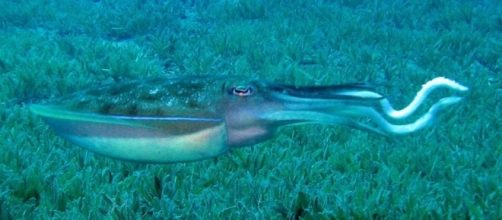A cuttlefish is a ten-armed oval-bodied cephalopod, with narrow fins as long as the body and a large calcareous internal shell. These are often considered to behumble marine creatures that haveone of the most highly developed nervous systems and complex brains among invertebrates. This shows that these creatures must have a of number senses or mathematical ability. This has been proven recently: scientists from China have found that Sepia pharaonis, a form of cuttlefish has a better ability to do maths as compared to primates and a normal one-year old baby of human being.
“Inborn cognitive ability” of cuttlefish
“Number discrimination” is considered as an ability that develops with the passage of time, but in the study published in the Proceedings. Biological sciences / The Royal Society researchers have reported the mathematical ability of cuttlefish to be an “innate cognitive ability”.
According to the researchers of the study, previous studies on human infants in the age range of 12 months have shown that they can distinguish between one and two, and two and three, but they are unable to differentiate between two and four, and three and four, as well as one and four. Similar studies on rhesus monkeys showed that the primates are able to distinguish between one, two, three, and four, but they are unable to distinguish between four and five.
In the present study, researchers have found that cuttlefish has an ability “at least equivalent” to infants and primates. Cuttlefish has theability to differentiate between one and five, as well as four and five.
Experiment on cuttlefish
In the study, researchers brought eggs of cuttlefish into the lab, and waited for the animal to grow to the age of one month.
After they reached the desired age, researchers started working on them. They presented a large shrimp and two small shrimps to starved and satisfied cuttlefish. They found that a starved cuttlefish selected a large shrimp, while a satisfied shrimp went for the two small shrimps. Although the study stopped at five shrimp, researchers are of opinion that the animal could count a little bit higher.
This experiment also showed that the cuttlefish tries to move away from risk when it is satisfied, and when it is hungry, it can take risks.
Researchers are of opinion that this behavior of cuttlefish is similar to the human beings’ attitude to water, food, and money exchange on the basis of metabolic state. Human beings also take more risks in their monetary decisions, when they feel hungry.

